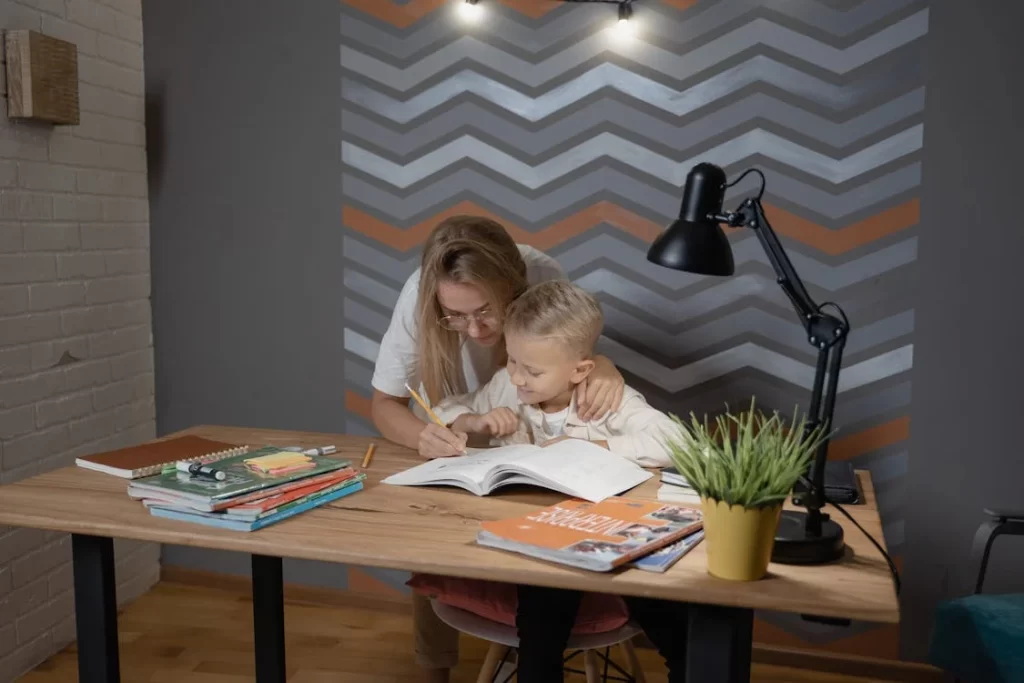Description: In this blog article, Science and maths tutor Haris, talks about how we can help and support children with learning difficulties and dyslexia.
Learning difficulties, including dyslexia, can present significant challenges for children in their academic journey.
As parents, teachers, and tutors, it’s crucial to understand how to support these children effectively, ensuring they receive the guidance and encouragement they need to succeed.
Here are some strategies to help children with learning difficulties, particularly dyslexia, thrive in their educational environment.
Understanding Dyslexia
Dyslexia is a common learning difficulty that primarily affects reading and spelling abilities.
It does not reflect a child’s intelligence but rather a specific neurological condition that makes processing language more challenging.
Children with dyslexia may struggle with phonological processing, decoding words, and comprehending written text. Recognising these challenges early on is the first step in providing appropriate support.
Early Identification and Intervention
Early identification of dyslexia is crucial for effective intervention.
Signs of dyslexia can include difficulties in recognising letters, trouble learning the sounds of letters, and challenges in reading simple words.

If you suspect a child has dyslexia, seek a professional evaluation from an educational psychologist or a specialist in learning disabilities.
Early intervention can significantly improve outcomes for children with dyslexia.
Individualised Learning Plans
Creating an individualised learning plan tailored to the child’s specific needs can be highly beneficial.
This plan should outline specific goals, teaching methods, and accommodations to support the child’s learning.
Collaboration between parents, teachers, and tutors is essential in developing and implementing this plan.
Multisensory Teaching Techniques
Multisensory teaching techniques engage multiple senses simultaneously, helping dyslexic children learn more effectively.
For example, using visual aids, auditory feedback, and tactile activities can reinforce learning.
Techniques such as the Orton-Gillingham approach, which emphasises multisensory instruction, are particularly effective for children with dyslexia.
Assistive Technology
Assistive technology can be a game-changer for children with dyslexia.
Tools such as text-to-speech software, audiobooks, and word processors with spell-check features can help these children access written material and independently complete assignments.

Encourage the use of these tools both at home and in the classroom to support their learning.
Building a Supportive Environment
Creating a supportive and understanding environment is crucial for children with dyslexia.
Positive reinforcement, patience, and encouragement can boost their confidence and motivation.
Celebrate their achievements, no matter how small, and remind them that dyslexia does not define their potential.
Developing Reading Skills
To improve reading skills, engage children in activities that make reading enjoyable.
Choose books that interest them, and read together regularly.

Practice phonics and decoding skills in a fun, non-pressuring way.
Encourage repeated reading of familiar texts to build fluency and confidence.
Fostering Self-Advocacy
Teach children with dyslexia to advocate for themselves.
Encourage them to communicate their needs and ask for help when necessary.
Building self-advocacy skills will empower them to take charge of their learning and seek accommodations that can support their success.
Collaboration and Communication
Effective support for children with dyslexia involves collaboration and open communication among parents, teachers, and tutors.
Regularly discuss the child’s progress, challenges, and any adjustments needed in their learning plan.
Working together as a team ensures a consistent and comprehensive approach to supporting the child’s needs.
Encouraging Extracurricular Activities
Participation in extracurricular activities can boost the self-esteem and social skills of children with dyslexia.

Activities such as sports, music, and art provide opportunities for them to excel outside the academic setting, fostering a well-rounded development and a sense of accomplishment.
Staying Informed and Seeking Support
Stay informed about dyslexia and effective teaching strategies by reading relevant literature and attending workshops or support groups.
Connecting with other parents and educators who have experience with dyslexia can provide valuable insights and support.
Final Note
Helping children with learning difficulties, particularly dyslexia, requires a combination of understanding, patience, and tailored teaching strategies.
By implementing these approaches, we can create a supportive learning environment that enables these children to overcome challenges and achieve their full potential.
Remember, every child learns differently, and with the right support, children with dyslexia can thrive academically and personally.
By tutor, Haris.




